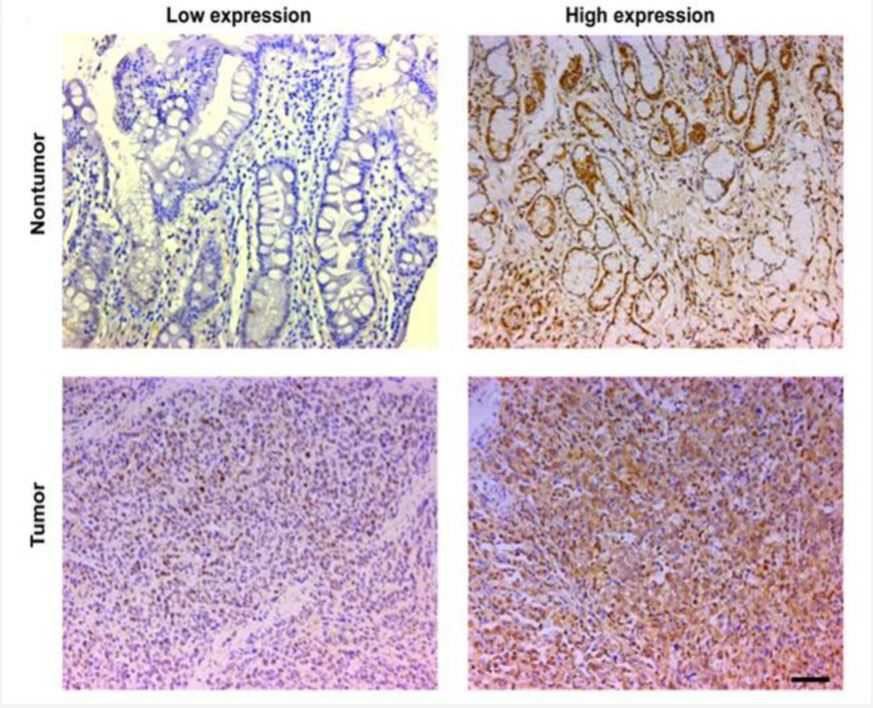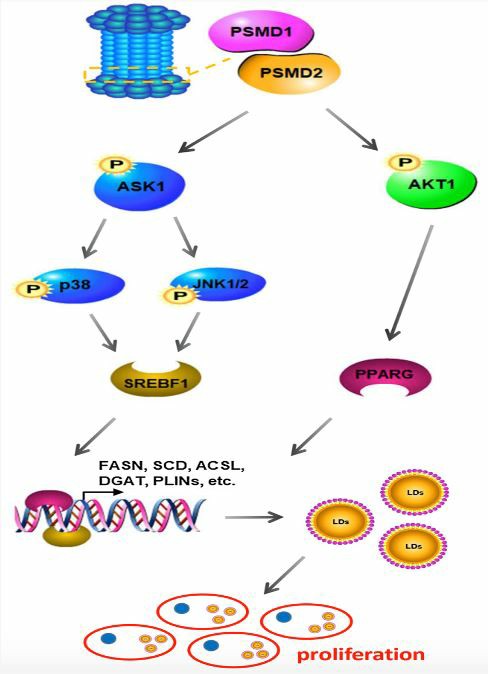PSMD1 and Associated Diseases
Creative Biolabs has been a long-term expert in the field of drug discovery. Based on our years of experience and advanced platforms, we can provide technical support services at all stages of your projects. Here we describe the PSMD1 gene and associated diseases for our clients.
Introduction of PSMD1
In humans, the PSMD1 gene is located on chromosome band 2q37.1 and contains 25 exons. Encoded by the PSMD1 gene, 26S proteasome non-ATPase regulatory subunit 1, also known as 26S Proteasome Regulatory Subunit Rpn2, is an essential subunit involved in the complete assembly of the 19S proteasome complex. Composed of 953 amino acids, this protein is 106 kDa in size with a calculated theoretical pI of 5.25. Rpn2 is a rigid protein at the center of the base subcomplex that serves as a link between the lid and the base. Alternative structures of the 19S base have been provided by using cryo-electron microscopy and X-ray crystallography. As a key structural component of 19S-RP, PSMD1 can serve as a docking site for other proteasome subunits. Therefore, PSMD1 plays an important role in the occurrence and development of cancer.
 Fig.1 Representative IHC images of PSMD1 expression in nontumor and tumor tissues of GC patients. (Xiong, 2019)
Fig.1 Representative IHC images of PSMD1 expression in nontumor and tumor tissues of GC patients. (Xiong, 2019)
PSMD1 and Cancer
Studies have shown that knockdown of PSMD1 can inhibit tumor cell proliferation, while overexpression of PSMD1 can promote cell proliferation and inhibit cell apoptosis. Furthermore, the knockdown of PSMD1 decreased cellular lipid content, whereas PSMD1 overexpression promoted lipid formation and increased cellular lipid content. Molecularly, PSMD1 inhibits fatty acid and lipid synthesis by downregulating SREBF1 and PPARγ through ASK-p38-JNK and AKT signaling. With the development of bioinformatics, we found that the high expression level of PSMD1 was involved in the proliferation and poor prognosis of HCC. Therefore, PSMD1 has been considered a potential therapeutic target in liver cancer.
In breast cancer, the PSMD1 gene can regulate cell proliferation and cell cycle progression by mediating p53 protein degradation. Highly expressed PSMD1 can be detected in anaplastic thyroid carcinoma (ATC) and breast cancer tissues as a novel therapeutic target.
 Fig.2 Overview of the regulatory mechanism of PSMD1 and PSMD2 that regulates tumor cell proliferation. (Tan, et al., 2019)
Fig.2 Overview of the regulatory mechanism of PSMD1 and PSMD2 that regulates tumor cell proliferation. (Tan, et al., 2019)
Related Services
- Viral Vector Design and Construction
- mRNA Therapeutics
- siRNA In Vitro Screening Service
- ASO In Vitro Screening Service
If you are interested in our services, please do not hesitate to contact us for more details.
References
- Tan, Y.; et al. PSMD1 and PSMD2 regulate HepG2 cell proliferation and apoptosis via modulating cellular lipid droplet metabolism. BMC molecular biology. 2019 Dec;20(1):1-20. Distributed under Open Access license CC BY 4.0, without modification.
- Xiong, W.; et al. Prognostic significance of PSMD1 expression in patients with gastric cancer. Journal of Cancer. 2019;10(18):4357. Distributed under Open Access license CC BY 4.0, without modification.
